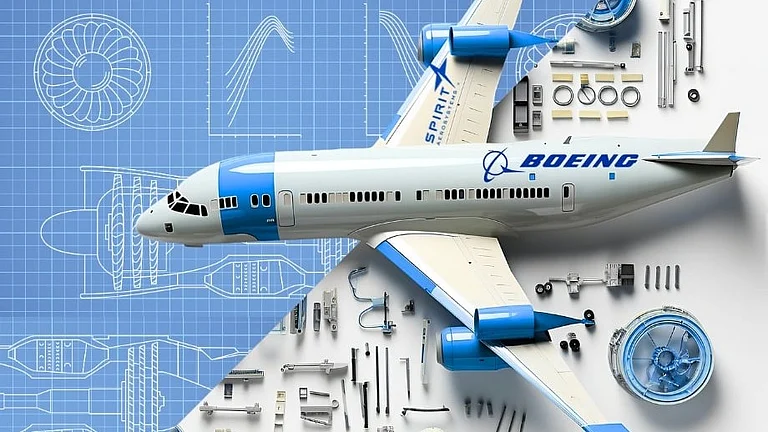The government on Tuesday updated its guidelines for cab‑aggregator platforms amid ongoing discussions on surge‑pricing issues.
Surge Pricing Explained: Why Your Ola, Uber or Rapido Ride Might Cost Twice as Much
The Road Transport Ministry’s MVAG 2025 allows cab aggregators like Ola, Uber and Rapido to charge up to twice the base fare during peak hours (up from 1.5×), while non‑peak fares must remain ≥50% of the base rate. States have three months to adopt the new guidelines
As per the revised rules, aggregators like Ola, Uber and Rapido can now charge up to twice the base fare during peak hours, an increase from the previous cap of 1.5 times. During non‑peak hours, fares must not fall below 50 % of the base rate.
The guidelines, titled Motor Vehicles Aggregator Guidelines (MVAG) 2025, issued by the Ministry of Road Transport and Highways, have advised the states to adopt the revised rules within the next three months.
State governments will be responsible for setting base fares for various vehicle categories such as taxis, auto‑rickshaws and bike‑taxis. If a state has not defined these fares, the aggregator must submit its proposed base fare to the respective state authority.
What Is Surge Pricing?
Surge pricing is a dynamic fare‑adjustment mechanism used by ride‑hailing platforms to raise per‑kilometre rates automatically whenever rider demand surpasses the number of drivers available in a given area.
In practice, the app’s algorithm continuously monitors supply (drivers) versus demand (ride requests). When demand spikes, such as during rush hour or sudden downpours, it multiplies the base fare by a factor (the “surge multiplier”) to incentivise more drivers to head toward high‑demand zones and ensure quicker pickups for passengers.
Why Platforms Use Surge Pricing?
At its core, surge pricing balances supply and demand in real time. By offering higher fares when demand is intense, platforms such as Uber and Ola incentivise off‑duty or idle drivers to log back on and move into the busiest zones, thereby reducing passenger wait times and preventing service outages.
Without such a mechanism, drivers might avoid areas prone to traffic snarls or poor weather, leading to long delays or unavailability during high‑demand periods. Moreover, surge multipliers help maximise overall fleet utilisation, ensuring fewer vehicles sit idle when trips cluster in particular pockets of the city.
Cap Change
In November 2020, the Ministry of Road Transport and Highways issued the Motor Vehicle Aggregators Guidelines, 2020, which formally capped surge pricing at 1.5 times the city‑taxi base fare.
Under those same rules, aggregators were also permitted to offer discounts down to 50 % of the base fare when demand was low, and drivers were guaranteed at least 80 % of the total fare for each completed ride.
Earlier this week, the Road Transport Ministry relaxed the peak‑hour limit, allowing aggregators such as Uber, Ola and Rapido to charge up to twice the base fare during the busiest hours of the day.
Under the updated rule, the previous 1.5x ceiling applies only in non‑peak periods. During peak periods, typically morning and evening commutes or severe weather, fares may now rise as high as twice the standard rate.
Impact on Passenger Pocket
Imagine you request a ride with a normal base fare of ₹100 during evening rush hour. Under the old 1.5x cap, your ride would have cost ₹150, an extra ₹50. Now, with the 2x limit, the same trip could cost ₹200, meaning you pay an additional ₹100.
On a heavier base fare, say a ₹200 journey during a downpour, the old maximum was ₹300, whereas today you might be charged up to ₹400. Similarly, after a big concert where the base fare stands at ₹150, passengers who once paid up to ₹225 will now see fares as high as ₹300.
While these bump‑ups can feel random, they are precise and predictable. No trip will exceed twice the stated base fare, and you’ll see the multiplier clearly before you book.
Why the Government Adopted These Caps
Policymakers are walking a fine line between consumer protection and driver welfare. The 1.5x and now 2x caps prevent excessive fare charging, an issue that once saw riders paying five‑figure sums for short distances, while ensuring that drivers earn meaningful premiums during peak periods.
By mandating that drivers receive at least 80 % of the fare and standardising a maximum multiplier, the rules aim to keep enough drivers on the road at peak times without pricing customers out. Uniform national guidelines simplify enforcement and reduce regional discrepancies, creating a transparent, balanced system for both riders and drivers alike.

